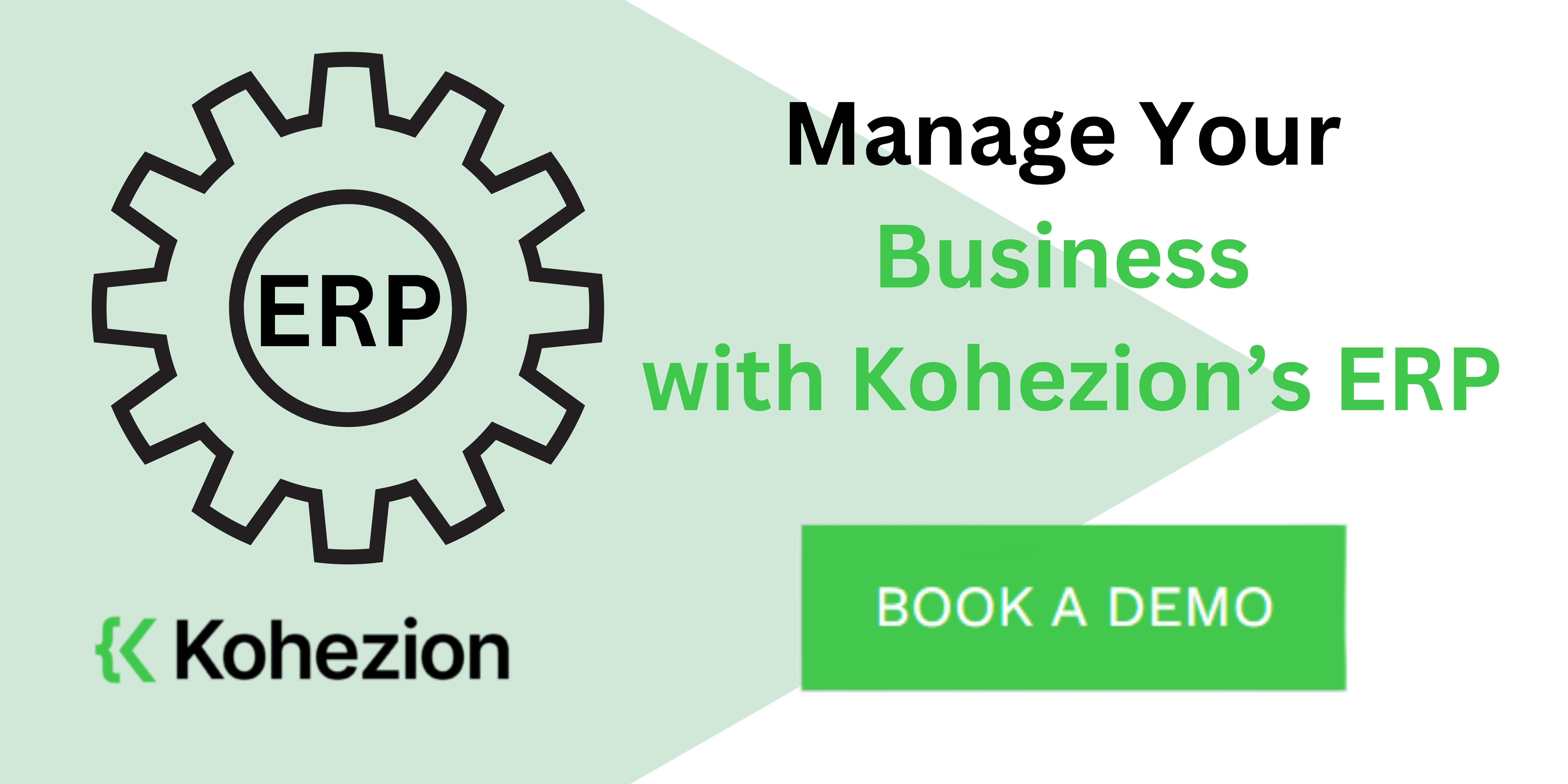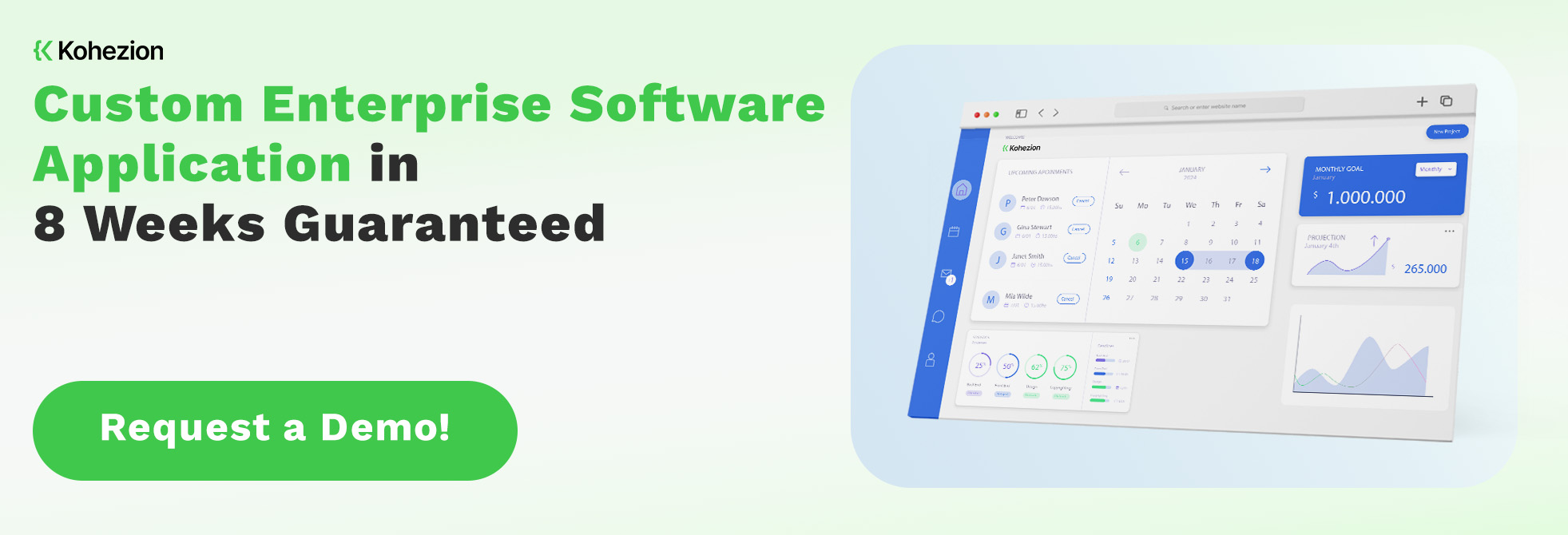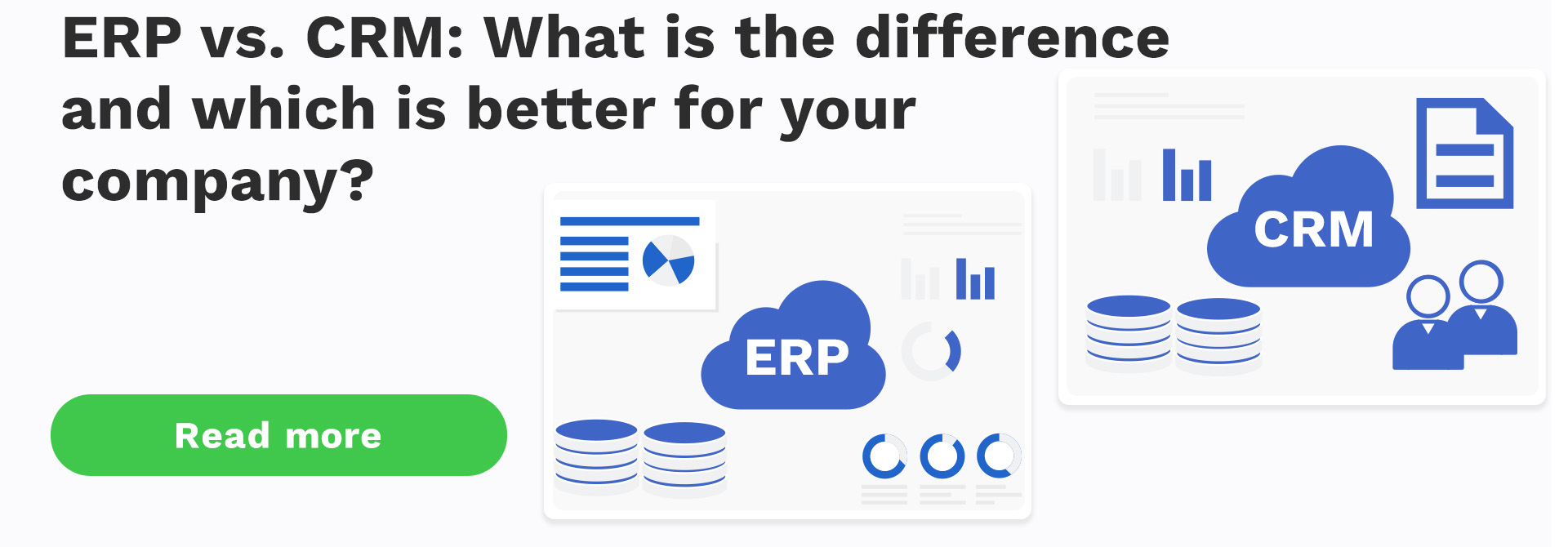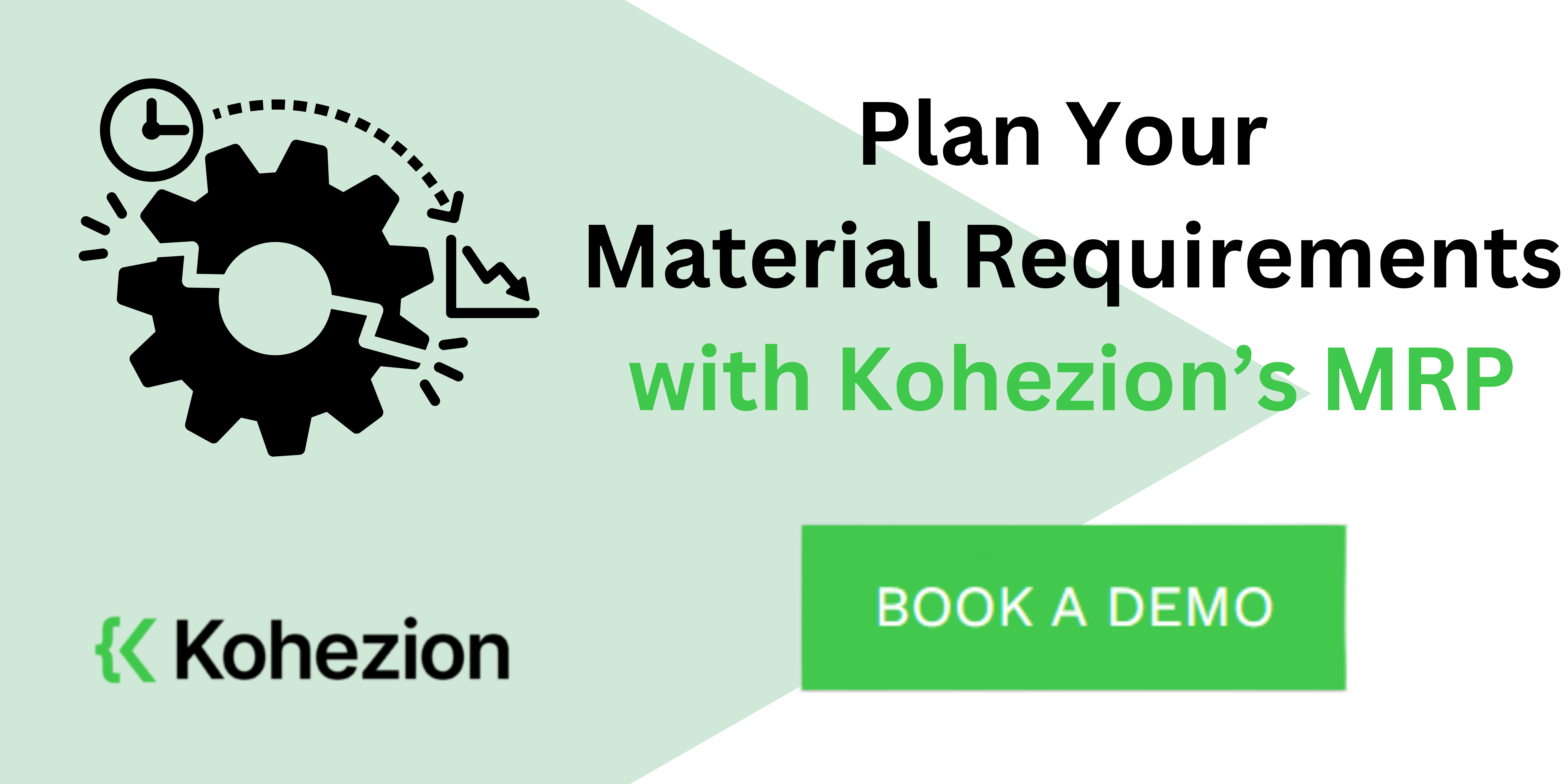ERP and MRP systems are great for streamlining day-to-day business practices and processes. But what’s the main difference between such systems and which one is best for your business?
In this article, we’ll talk about the answers to those questions and more. After all, the global ERP software market is set to reach $78.41 billion by 2026 from $35.81 billion in 2018. Meanwhile, the MRP software market is expected to reach $8.2857 billion in 2028.
What is an ERP? Its Functions and Advantages
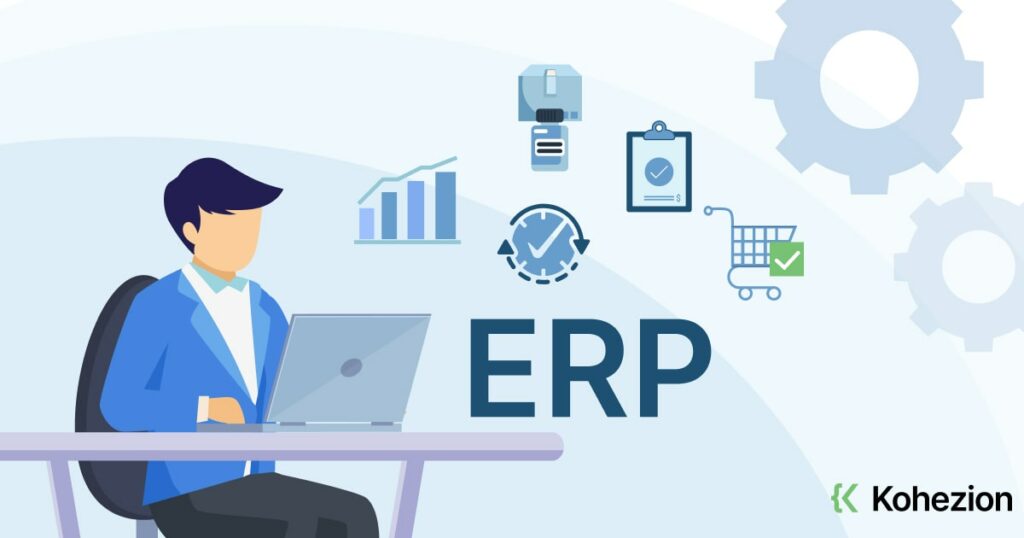
An enterprise resource planning (ERP) system incorporates all core business procedures in one place. This gives you visibility into every business process from CRM to inventory and supply chain management. The advantages businesses can get from an ERP system include:
- Enhanced data security: ERP consolidates security systems into a single structure and protects sensitive data.
- Increased productivity: ERP offers automation features that free up your time and let you focus on more important processes.
- Easier reporting and planning: you can share accurate, real-time data and generate reports. This also allows for better interdepartmental communication.
- Reduced operational costs: ERP can increase the efficiency, cut costs and increase profitability across various departments.
- More flexible systems: cloud-based ERP systems can be configured to fit any changes in your workflow or workforce as your business expands.
- Greater scalability: ERP lets you combine real-time data with greater flexibility, putting you in a great position for scalability.
- Better customer service: ERP paves the way for better CRM operations. You can automate customer services such as payment notifications or lead nurturing.
- Data reliability: ERP gives you visibility into reliable data that you can access anywhere you are and through multiple devices.
What is an MRP? Its Functions and Benefits
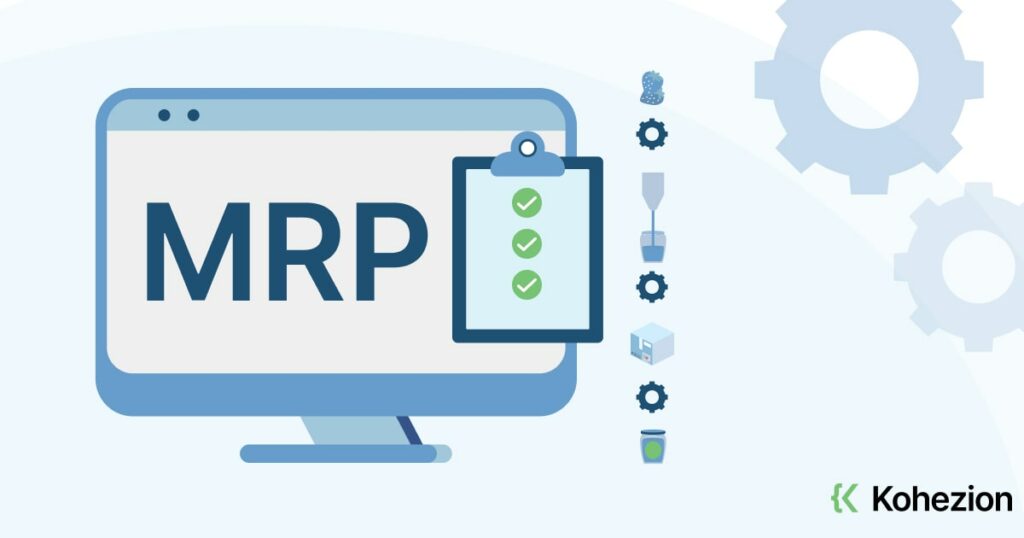
Material requirements planning (MRP) is a software-based inventory management system calculating the materials needed to manufacture a product. It’s mainly used by manufacturers that want to revolutionize inventories and production processes. It’s often interchangeable with manufacturing resource planning (MRP II). Here are some of its greatest benefits:
- Inventory control: MRP uses data from the production schedule to determine inventory costs and levels necessary to meet demand.
- Purchase planning: MRP lets users know what’s available, what to buy, and when to buy them. Managers can configure MRP systems to contact suppliers automatically when a purchase is required.
- Production planning: MRP detects bottlenecks due to material scarcity. The system then reroutes production where materials are available.
- Work scheduling: managers can use MRP to schedule active production time. The system enables them to control hourly operations, labor tasks, and equipment.
- Resource management: MRP gives you control over the availability of raw materials and expected yield, resulting in greater efficiency.
- Data management and documentation: managers can use MRP to generate, analyze, and present manufacturing data, which may include deliveries, cash, receipts, invoices, reports, and structured presentations.
- Cost management: MRP systems give insights into the quantity and cost of materials. These include shipping costs, storage, and carrying. This allows managers to optimize their purchases.
- Time management: MRP systems can be fully automated, requiring little human intervention. This streamlines workflows and saves a great amount of time.
Why it is Essential to Choose the Right Business System?
Your choice of a business system directly affects your efficiency, productivity, and adaptability. A well-suited system aligns with and enhances your existing processes and ensures streamlined processes.
The choice between ERP and MRP systems will influence how deeply you should integrate the chosen system and what scope and functionalities you can use. It also affects how your departments will collaborate and share information.
Also, your choice affects your business’ scalability — the system you choose should accommodate growth to prevent frequent software changes. Costs are also important as setup, training, and maintenance expenses can significantly affect your profitability.
The type of system you choose will also determine the time your workforce needs for user adoption. This affects the overall productivity of your departments and teams. And for long-term success with the system, choose one that has good support services.
ERP versus MRP - An In-depth Look
Now that you know what ERP and MRP systems are and their advantages, let’s dive deeper — let’s get an in-depth look at their differences, benefits, and downsides.
Key Differences between ERP and MRP Systems
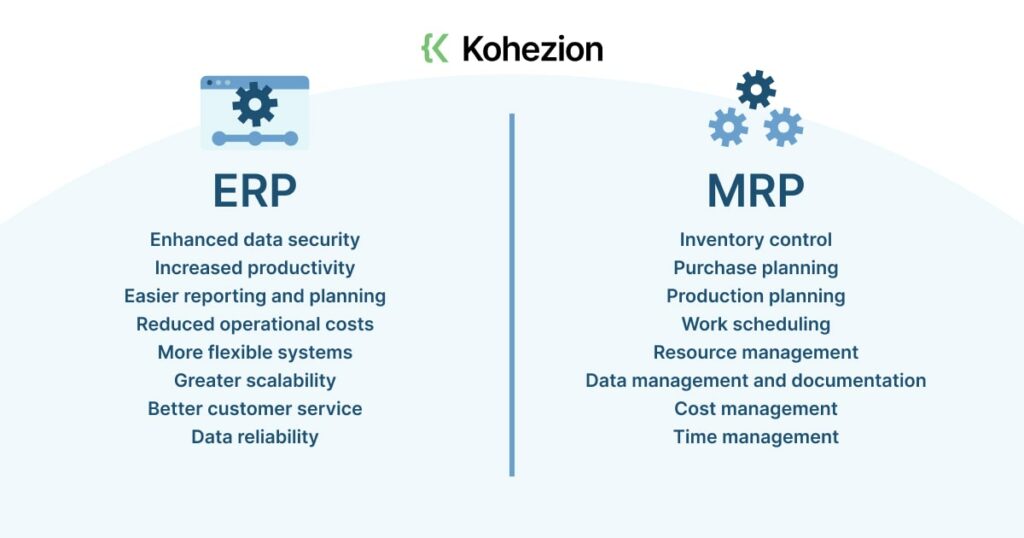
The main difference between ERP and MRP systems is their scope: ERP systems essentially plan and automate a variety of business processes and functions, while MRP systems focus on materials management.
You can use ERP systems for accounting, manufacturing, supply chain and supplier management, customer management, processes and planning, and quality. Meanwhile, MRP has a more narrow scope in terms of ordering and planning for materials.
Subsequently, users of ERP systems tend to be different from users of MRP systems. People from multiple departments may use ERP software, while those who handle manufacturing operations may use MRP solutions.
Here’s more: MRP systems are more standalone than ERP tools. Some MRP solutions can be combined with other existing programs, but the implementation is usually challenging. Meanwhile, ERP systems are relatively easier to integrate with other existing systems.
Advantages and Disadvantages of ERP and MRP Systems
Comparing the advantages and disadvantages of ERP and MRP systems head-on, the choice depends on the specific needs and scale of the business. Here’s a breakdown of each system’s advantages and disadvantages:
| Aspects | ERP Systems | MRP Systems |
| Scope | Advantage: Comprehensive, covering multiple business processes | Advantage: Focused primarily on manufacturing and inventory |
| Disadvantage: May be more extensive than needed for small businesses | Disadvantage: limited in scope; may not address broader organizational needs | |
| Integration | Advantage: Seamless integration across various departments and functions | Advantage: strong integration within manufacturing and inventory processes |
| Disadvantage: Complexity can lead to longer implementation times | Disadvantage: lack of integration with non-production departments | |
| Scalability | Advantage: Generally more scalable to accommodate business growth | Advantage: Scalable for manufacturing needs, suitable for smaller businesses |
| Disadvantage: Initial setup and scalability may come with higher costs | Disadvantage: Limited scalability for businesses with diverse operations | |
| Cost | Advantage: Cost-effective for larger enterprises with diverse needs | Advantage: Potentially lower initial costs for smaller businesses |
| Disadvantage: Higher initial and ongoing costs, including training and support | Disadvantage: May lack functionalities and require additional systems for full coverage | |
| User Adoption | Advantage: Extensive functionalities may require more training but offers a comprehensive view | Advantage: Easier learning curve, especially for users focused on manufacturing |
| Disadvantage: Potential resistance due to complexity and longer training periods | Disadvantage: Limited functionality may lead to gaps in business insights | |
| Vendor Support | Advantage: Established vendors often provide robust support and updates | Advantage: Specialized vendors can offer tailored support for manufacturing needs |
| Disadvantage: Smaller businesses may face challenges in negotiating support contracts | Disadvantage: Limited vendor support for broader business functions |
ERP offers comprehensive solutions suitable for larger enterprises, while MRP systems are focused on manufacturing and inventory management. This makes MRP systems more suitable for smaller businesses with specific requirements.
Evaluating ERP and MRP in Various Business Contexts
When evaluating ERP and MRP systems, consider the nature of your business. Small businesses have distinct needs compared to large enterprises. This influences the choice between the two systems.
For Small Businesses - ERP or MRP?
For small businesses with a focus on manufacturing and inventory, an MRP system might be more suitable. It’s cost-effective and scalable for smaller operations. On top of that, its streamlined focus on core production needs makes it a pragmatic choice.
Meanwhile, ERP systems have comprehensive functionalities. As such, they can be overly complex and resource-intensive for small businesses unless they have diverse operational needs that warrant broader coverage.
For Large Enterprises - ERP or MRP?
Large businesses have multifaceted operations spanning various departments. As a result, they benefit more from ERP systems. Such systems provide comprehensive integration of business functions and offer scalability for complex operations. They also provide robust support for established vendors.
All of these align well with the expansive requirements of large-scale enterprises.
For comparison, while MRP systems are effective for manufacturing aspects, they may fall short in addressing the broader needs of larger corporations. For such corporations, an integrated approach is a must for optimal efficiency and decision-making.
Conclusion
ERP and MRP have distinct strengths and weaknesses. Smaller businesses focused on manufacturing and inventory might benefit greatly from a dedicated MRP system, while larger enterprises with broader needs are better off with ERP systems.
If you’re looking for a partner in creating the right system for your business — whether that’s an MRP or an ERP system — check out Kohezion. It’s a highly customizable drag-and-drop online database builder that can empower you to build custom systems that can handle your business requirements.
Start building with a free account
Frequently Asked Questions
ERP stands for enterprise resource planning. It’s a software solution that integrates various business processes and functions across an organization into a single unified system. Organizations use ERP systems to manage day-to-day activities such as accounting, procurement, project management, risk management and compliance, and supply chain operations.
A complete ERP suite also includes enterprise performance management. This helps you plan, budget, forecast, and report your organization’s financial results. It also tracks all aspects of production, logistics, and financials.
MRP stands for material requirements planning and focuses specifically on the planning and management of materials and production processes in manufacturing. Organizations use MRP to develop a production plan for finished goods, as they define inventory requirements for components and raw materials.
SAP (systems, applications, and products) is (technically) an ERP system. Although it includes MRP functionality, SAP’s scope extends beyond material requirements planning to cover a wide range of business processes, including finance, HR, and supply chain management.
However, most businesses don’t consider SAP to be an ERP in itself. Instead, it’s the largest and most famous product of the SAP corporation. It’s an ERP implementation provider. SAP ERP has multiple modules that cover all aspects of business management.
The difference in cost between ERP and MRP systems is dependent on their scope and functionality. ERP systems are more comprehensive and have high initial and ongoing costs. That’s due to their broader integration and training requirements.
On the flip side, MRP systems have a narrower focus and may be more cost-effective. This is especially true for businesses with specific manufacturing needs. However, consider the overall value and scalability of the system concerning the specific requirements and growth plans of the business.
ERP systems deliver higher value but come with higher costs, while MRP is more cost-effective but has a limited scope.
